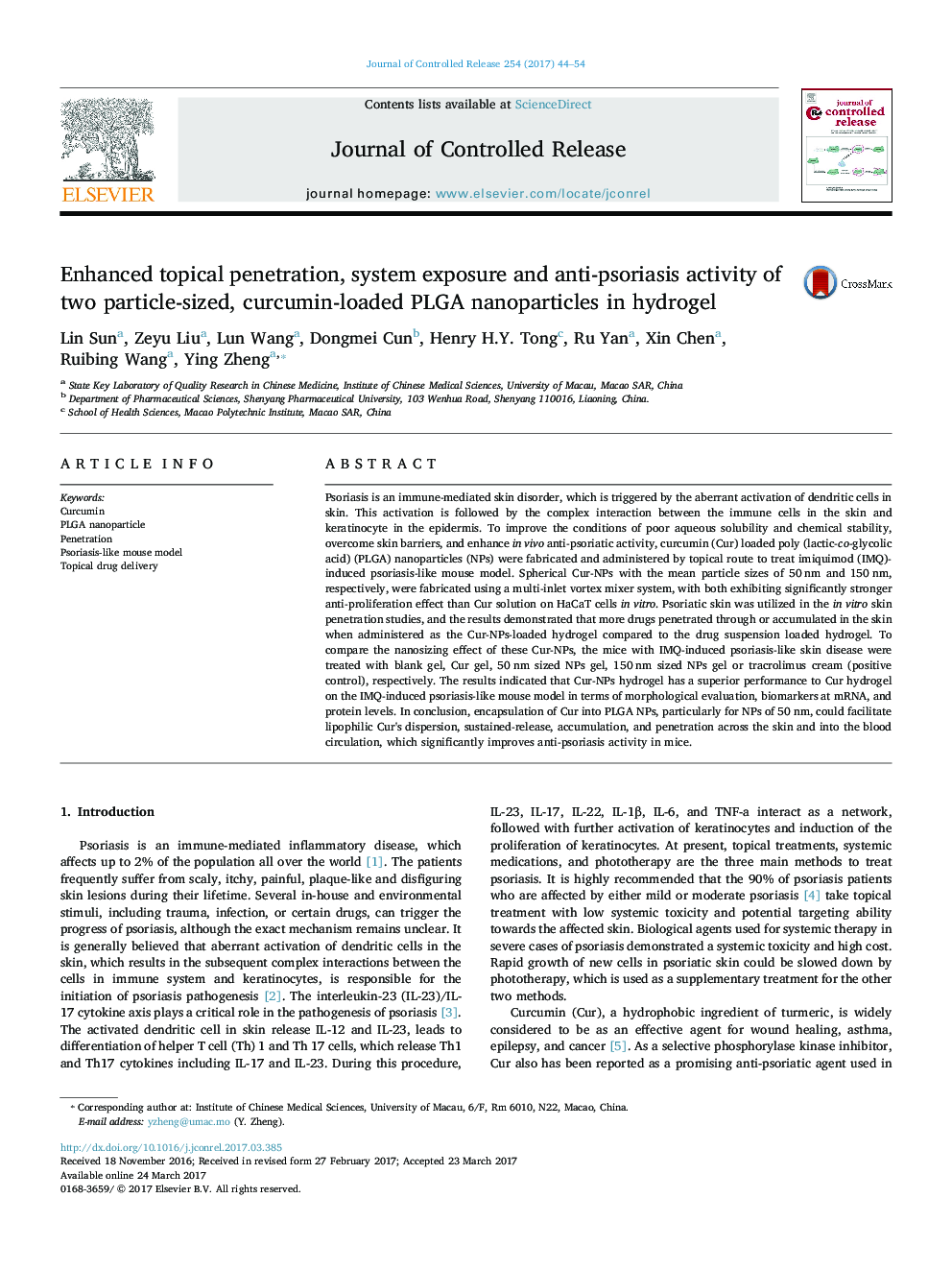| Article ID | Journal | Published Year | Pages | File Type |
|---|---|---|---|---|
| 5433788 | Journal of Controlled Release | 2017 | 11 Pages |
Psoriasis is an immune-mediated skin disorder, which is triggered by the aberrant activation of dendritic cells in skin. This activation is followed by the complex interaction between the immune cells in the skin and keratinocyte in the epidermis. To improve the conditions of poor aqueous solubility and chemical stability, overcome skin barriers, and enhance in vivo anti-psoriatic activity, curcumin (Cur) loaded poly (lactic-co-glycolic acid) (PLGA) nanoparticles (NPs) were fabricated and administered by topical route to treat imiquimod (IMQ)-induced psoriasis-like mouse model. Spherical Cur-NPs with the mean particle sizes of 50Â nm and 150Â nm, respectively, were fabricated using a multi-inlet vortex mixer system, with both exhibiting significantly stronger anti-proliferation effect than Cur solution on HaCaT cells in vitro. Psoriatic skin was utilized in the in vitro skin penetration studies, and the results demonstrated that more drugs penetrated through or accumulated in the skin when administered as the Cur-NPs-loaded hydrogel compared to the drug suspension loaded hydrogel. To compare the nanosizing effect of these Cur-NPs, the mice with IMQ-induced psoriasis-like skin disease were treated with blank gel, Cur gel, 50Â nm sized NPs gel, 150Â nm sized NPs gel or tracrolimus cream (positive control), respectively. The results indicated that Cur-NPs hydrogel has a superior performance to Cur hydrogel on the IMQ-induced psoriasis-like mouse model in terms of morphological evaluation, biomarkers at mRNA, and protein levels. In conclusion, encapsulation of Cur into PLGA NPs, particularly for NPs of 50Â nm, could facilitate lipophilic Cur's dispersion, sustained-release, accumulation, and penetration across the skin and into the blood circulation, which significantly improves anti-psoriasis activity in mice.
Graphical abstractDownload high-res image (170KB)Download full-size image
